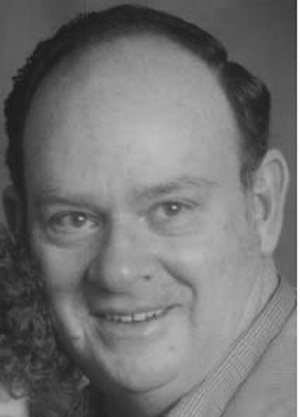In Memoriam: Frank Haughey, PhD, CHP
1930-2007
by Kent Lambert, CHP with first-person account by Patrick McDermott, CHP

It was recently learned that Francis J. (Frank) Haughey, PhD, CHP, died 6 November 2007. Dr. Haughey was professor emeritus of health physics at Rutgers, The State University of New Jersey’s Cook College.
Frank was a charter member and Fellow of the Health Physics Society and a certified health physicist (1962). He served on the American Board of Health Physics (ABHP) Panel of Examiners and two terms on the ABHP Continuing Education Panel. He also served on various advisory committees to the New Jersey Department of Health. Haughey received the Arthur F. Humm, Jr., Memorial Award in 1995 in recognition of his strong support of the National Registry of Radiation Protection Technologists.
After leaving the Air Force in 1955, Frank began his career in health physics, working at Brookhaven National Laboratory, while also attending night school at Hofstra University. Upon earning his bachelor’s degree in physics, he went to Rutgers University, receiving his master’s degree in 1962 and his PhD in 1966. He joined the radiation sciences faculty in 1966, where he remained until his retirement in 1995. From 1965 to 1975, Rutgers led the nation in students graduating with master’s degrees in radiation science (92). Through 1991, there were 181 MS and 26 PhD degrees awarded.
As with all good educators, Frank’s legacy is his students, to whom he was extraordinarily dedicated. It is for this attribute that Frank will be most remembered. Frank’s devotion to his students included bending (some might say “breaking") the rules to help a student. I met Frank at Rutgers in January of 1992. I was an undergraduate student over a year away from graduation, and Frank approached me and directed that I take the two-semester “Radiation and Radioactivity" courses. This was the eight-credit foundation on which the Rutgers graduate program was built. (Haughey’s disciples will recall that he started every class with an outline, and it always started with “Atomic Structure.") I tried to defer, but Frank insisted if I wanted my master’s degree I had to take the classes now because he was going to retire and the HP program would be left to wither. Graduate work was pretty far off in my future. Frank told me: “Don’t worry about it. Take the class but don’t register for anything; I’ll keep your grade in my drawer. After you get into the graduate program, I’ll make sure you get the credits." Four years later, Frank was good to his word. This brief story is intended to be illustrating—I suspect most students have a Frank story they can tell, from ordering copies of the Radiological Health Handbook or the Chart of the Nuclides to coming in on a Saturday to meet a new student for a tour of the campus to letting a new student without housing “crash" on the floor of his office for a few weeks!
If you were one of Frank’s students, you witnessed a professor who truly enjoyed introducing his students to an exciting subject. This is a special quality in a professor; his enthusiasm fueled my curiosity. I was fortunate enough to be a student in the very last class Frank taught and know from many discussions with my predecessors that this enthusiasm was a key to his success and joy for decades.
A few years after Frank retired, his wife of 49 years, Claire, passed away. Frank then retreated into his private life and was generally reclusive to peers and former students. The delay in this remembrance is a result. Frank is survived by his brother, six children, and 14 grandchildren.
The health physics community lost a great teacher, and that is a sad thing. But we still have the education he bestowed upon us and the past and future accomplishments of his students. And that is worth celebrating.
The authors would like to acknowledge Drs. Alan Appleby and Peter Strom for contributing information to make this obituary possible.



